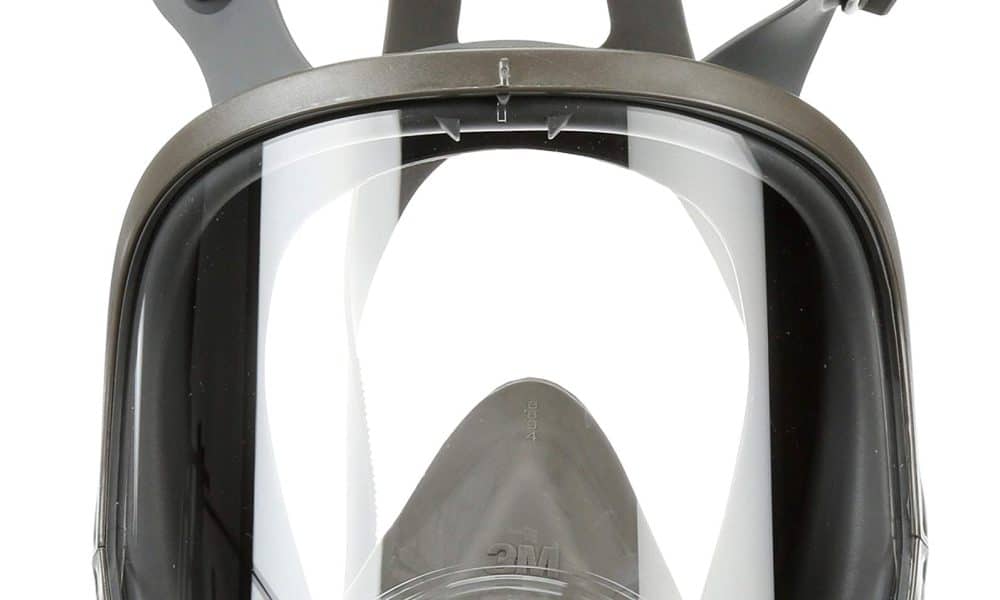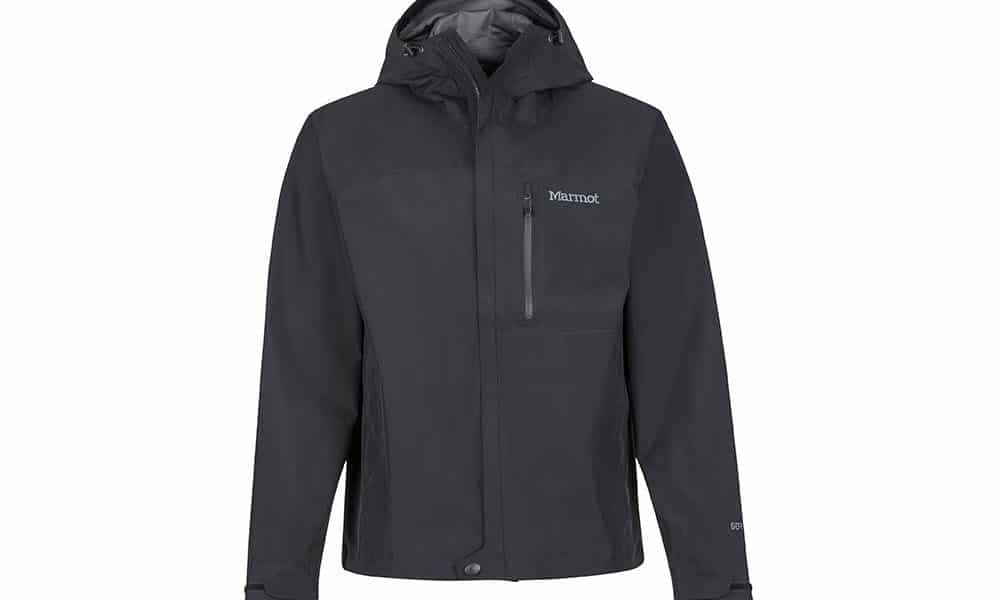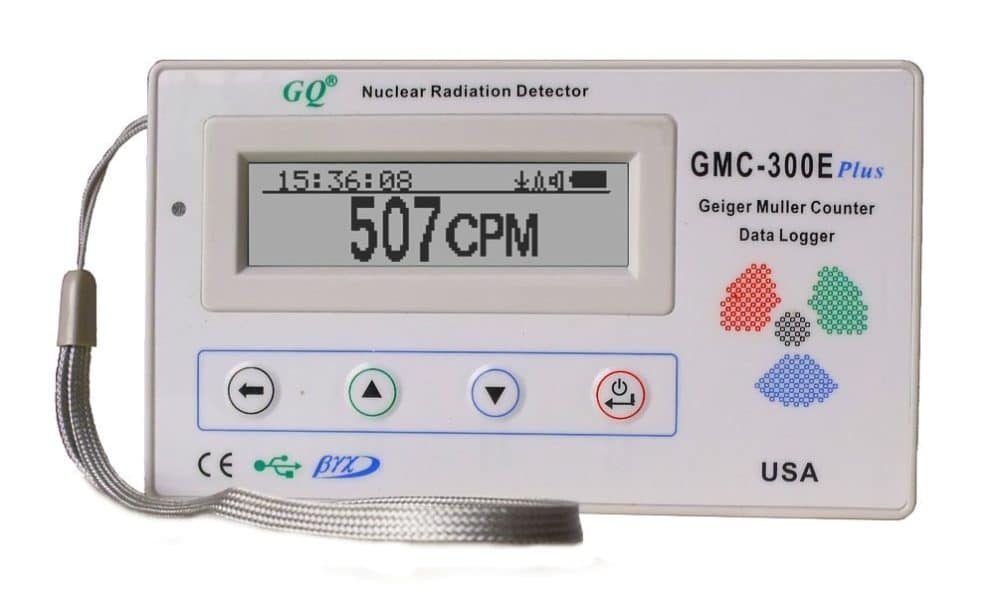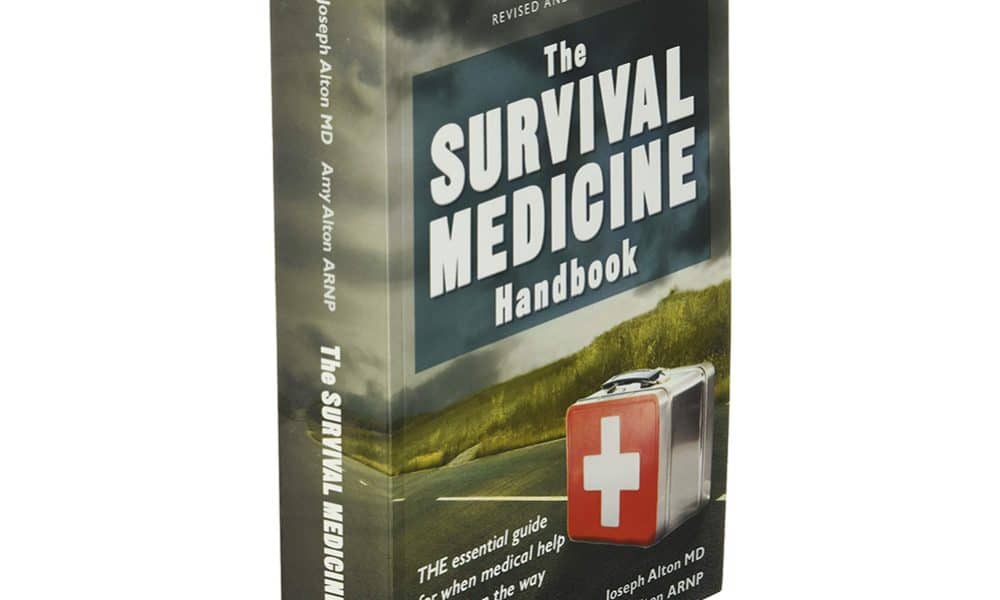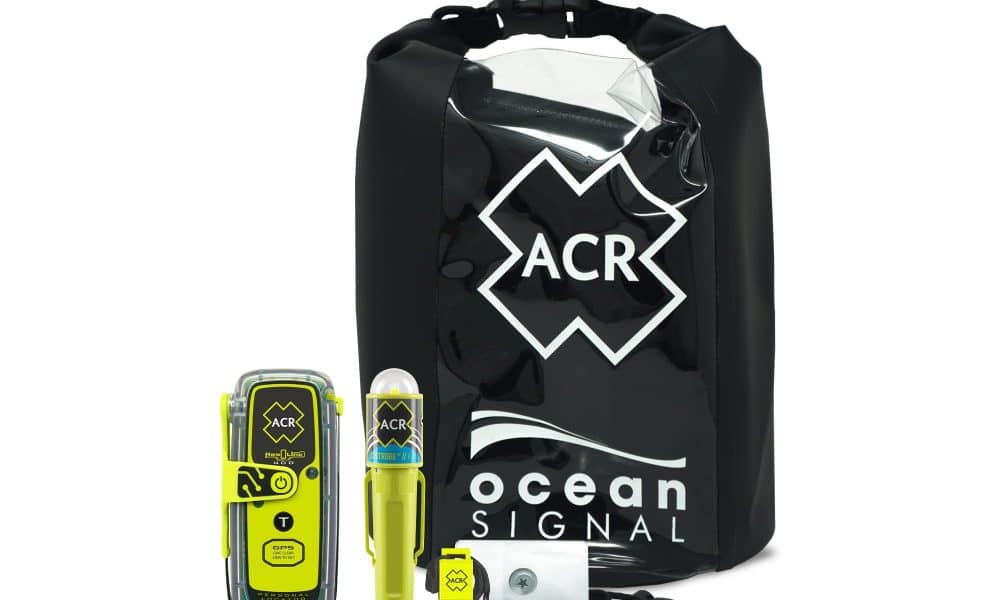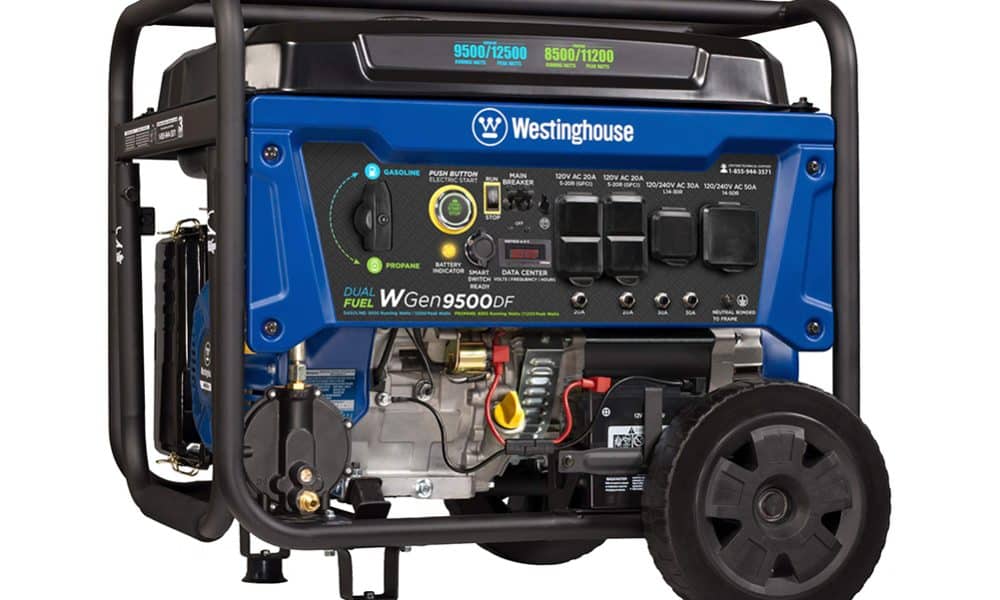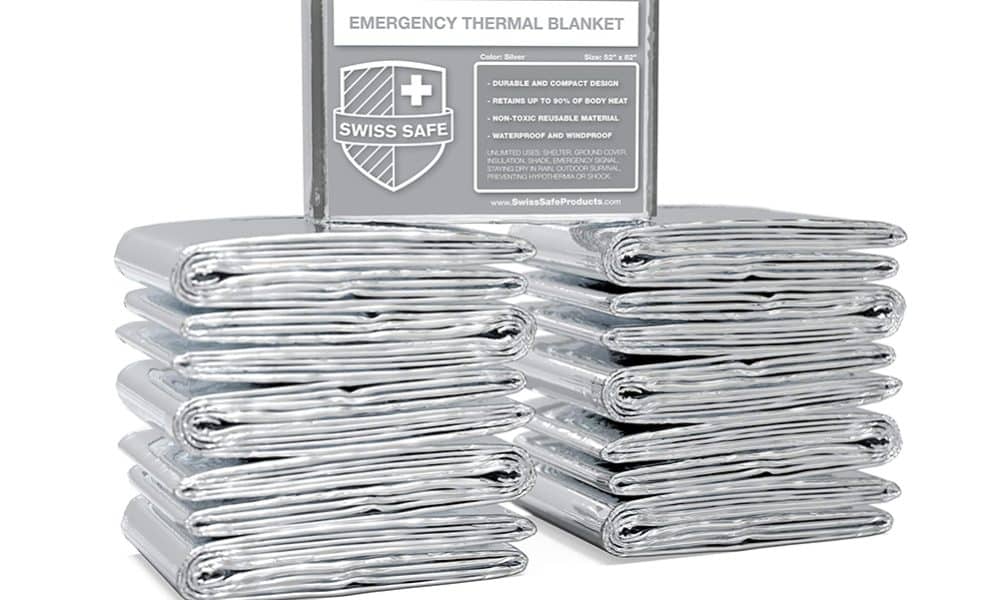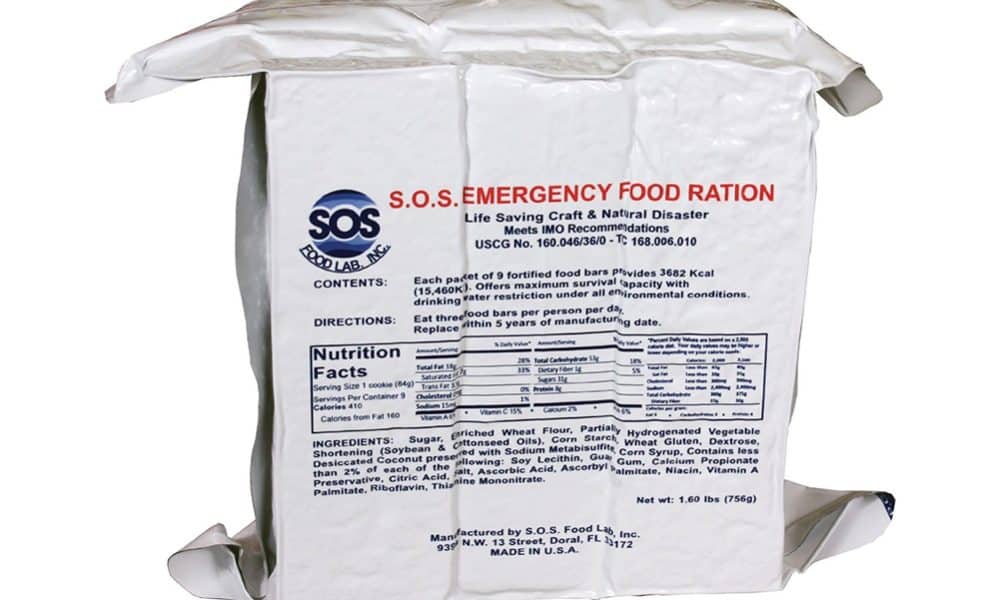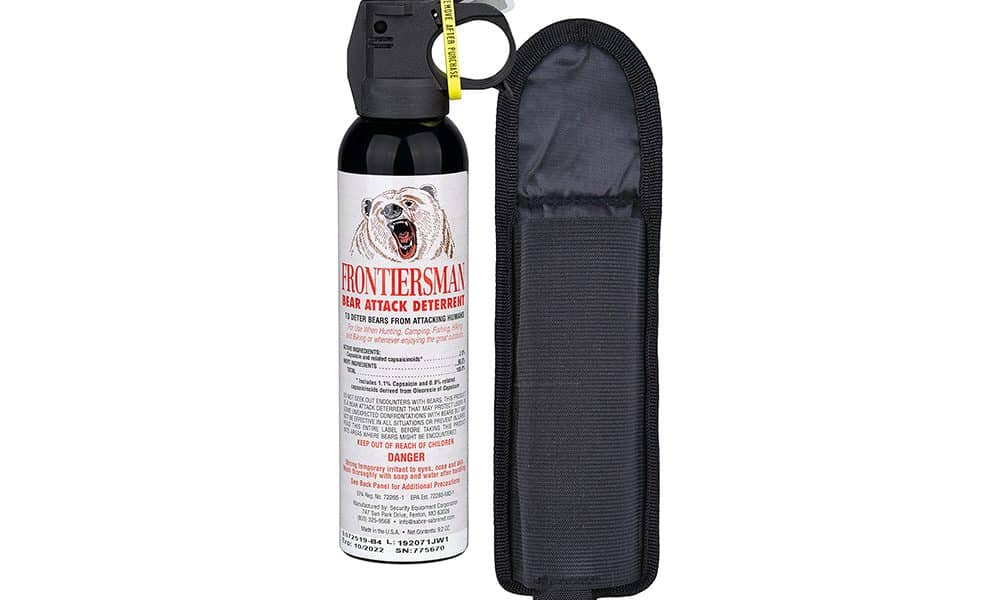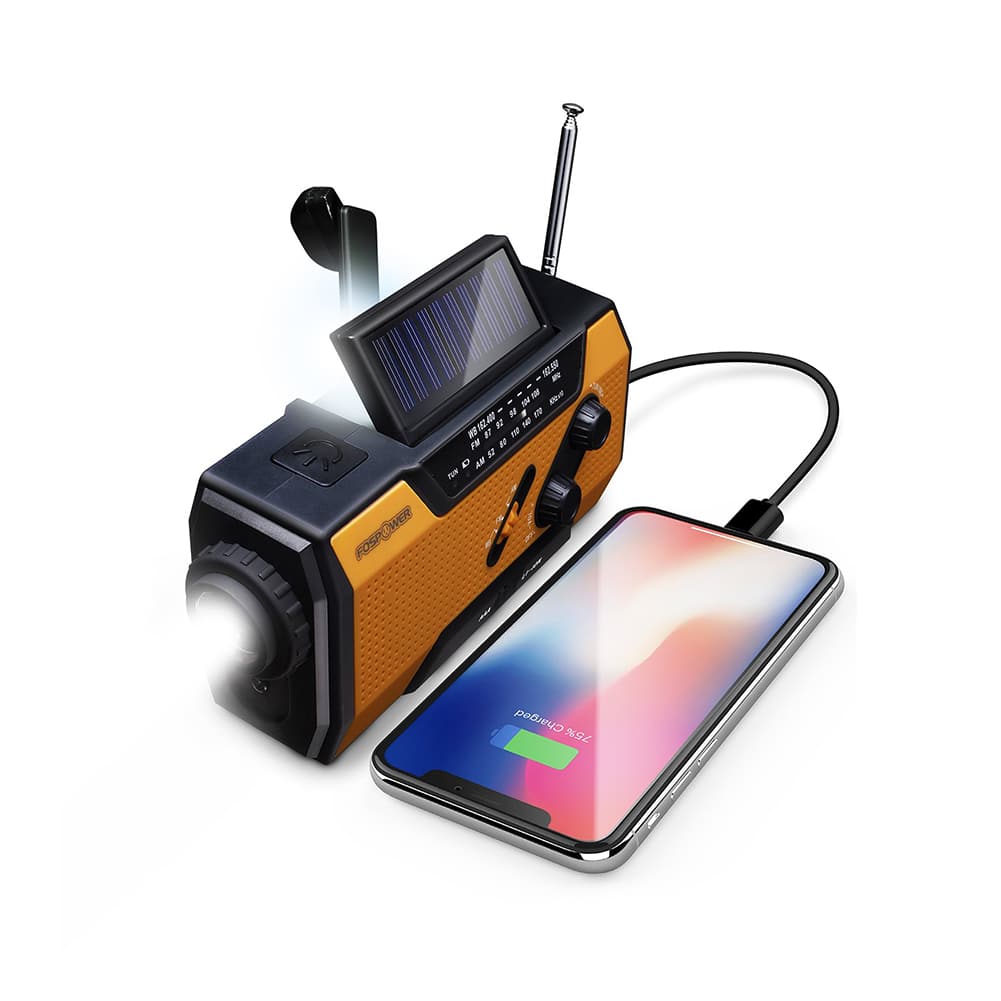The end is nigh! At least that’s what they say in all of the movies. Seriously though, these days it can’t hurt to be a little prepared. So many of us live in earthquake-prone areas, or places that see forest fires, flash floods, tornados, hurricanes—you name it. As the climate continues to change and the weather becomes increasingly extreme, it’s likely even more people will be living in areas that see these kinds of disaster scenarios. Those used to these conditions know that preparation is key. With that in mind, we’ve put together a list of 50 essential items everyone needs in their bug-out bag.
Related | The 16 Most Iconic Lesbian Movies Of All Time
No Two Bug-Out Bags are Alike
Just as no two doomsdays are alike, no two bug-out bags should be alike. A good bug-out bag takes into account the specific needs of the disaster scenarios you may be prone to. Is extreme heat more of a concern for you than extreme cold? Perhaps you need to prepare for very wet conditions. Are mosquitos or bears common in your area? How easily can you access fresh water?

What Makes a Good Bug Out Bag?
When you put together a bug-out bag understand that more is not always more. Curate the items that fit your unique needs. Secure them in a safe place that is easily accessible. Regularly restock any perishables and replace batteries or make repairs where needed. A bug-out bag is no use if it’s left to gather dust or rot in the corner. It needs to be ready when you’re ready.
Consider Your Bug-Out Bag’s Budget
Another question you must ask yourself is how and where you should spend your money. There is an argument to be made that these potentially life-saving items are not the place to skimp. Certainly, that’s true for good quality clothing or technology. This list has been curated with a list of general items, some more affordable than others. A good bug-out bag will also stock some items we don’t include below.
Pay attention to simple items like tissue paper, various batteries, basic cleaning supplies, a sowing kit for repairs, emergency cash, and any sundry items you may need day-to-day. Don’t forget to consider entertainment items (books, cards, or board games) for those long nights waiting for help.
1. Waterproof First Aid Kit
A well-stocked first aid kit can save a life and is an absolutely essential part of any bug-out bag. Make sure to familiarize yourself with your kit and its contents. A first aid kit is considerably less useful when you don’t know how to use it. Make sure to replenish bandages, dressing, and any other items that are running low. This is a great place to store backup prescription and non-prescription medication, just pay attention to (and take note of) the expiration dates.
We recommend storing your first aid supplies in a waterproof kit. Water damage can render your supplies useless, so if you live in an area prone to flood or snow this is something to consider. Even if you don’t, it never hurts to prepare for the unexpected.
2. Particulate Respirator and/or Gas Mask
Let’s start off with one of the more complex items. The mask you will need depends heavily on what conditions you’re facing. Many of us are already intimately familiar with N95 disposable masks and have stock of those at home. Continue to keep those on hand, particularly the disposable masks without vents. For more specific disaster scenarios it can help to have another mask on hand.
The 3M Full Facepiece Reusable Respirator (above) will protect from particulates much like a disposable 3M Respirator or a half-mask 3M Respirator. This mask has the added benefit of protecting your eyes and can make for a more comfortable and secure fit that lowers the risk of air leakage. This can be useful if you live in an area prone to forest fires. Although it is reusable, you must replace the filters.
Note: This mask will not provide protection from or remove some gases or vapors. For this, you may need a gas and vapor mask. If in doubt, follow this useful guide. Remember to carefully read all of the instructions on any product you consider purchasing to ensure it will suit your needs.
3. Diamond Grip All-Surface Traction Cleats
If you live in an area with rough terrain that is difficult to cross, this may be a solution for you. Particularly if you see yourself spending a lot of time outdoors in icy conditions. These Diamond Grip All-Surface Traction Cleats are ideal for navigating boilerplate ice to hard-packed snow. They’re also useful if you see yourself frequently transitioning between surfaces like rock, gravel, dirt, and concrete. They also neatly fit over a pair of heavy-duty boots.
4. Waterproof Hiking Boots
Speaking of boots, no matter where you’re based you’ll likely need a good pair of boots. They will need to be durable, waterproof, and comfortable. This is your workhorse and not a place to skimp or save. A decent pair of boots should last you many years.
If you think you’ll need something more resistant to deep snow drifts or water, consider a tall pair of work boots. These will protect you even if you’re standing in ankle-deep snow, slush, or water. Keep those feet dry at all costs!
5. Heavy-Duty Gloves
We’ve protected most of the extremities so far. Now for your hands. Despite being crucial to performing many of our daily tasks, good gloves are all too often left out of disaster kits. When considering what gloves to buy, think about the tasks you’ll be performing. If you need protection from sharp or rough objects outdoors consider these simple, durable gloves. You shouldn’t need to sacrifice dexterity when shopping for a pair of durable gloves.
If you need more protection from the elements, try these insulated waterproof gloves to protect against the biting cold. I can’t imagine why, but perhaps you need protection from extreme heat. These heat and fire-resistant gloves with kevlar stitching should be more than sufficient. Your first aid kit should have a stash of medical gloves included, but make sure to double-check.
6. UPF 50 Waterproof Breathable Outdoor Hat
Never underestimate the importance of a hat. Protection from the sun and the rain is a must if you expect to spend any time outdoors. A good hat will protect against these factors and fasten to your head so the wind doesn’t blow it off.
If you live in freezing conditions you’ll be glad for any extra ear protection you account for. If scarves and beanies don’t do the trick, a ski mask will work wonders to protect you from the frigid wind. Perhaps you live in warm, wet conditions and mosquitos are a real concern. Try draping your hat with a head mesh net to keep the insects at bay.
7. Waterproof Rain Jacket
It’s no good wearing all the other protective gear while neglecting your body. Make sure you’re equipped with a lightweight, waterproof rain jacket that is still in good condition. When wet gets it, that’s when the cold can take hold. Whatever you do, stay dry and stay warm.
8. Windproof Winter Parka
When you live in cold or arctic conditions, sometimes staying warm goes beyond staying dry. Once again we recommend taking this very seriously and saving money elsewhere in the list. A good, wind-resistant jacket can be the difference between a walk in the snow and hypothermia.
9. Snow Shoes and Trekking Poles
When it comes to survival staying warm and sitting tight until help arrives is preferable. Ideally, you won’t need to brave the elements to survive, but sometimes that’s not always possible. If long treks in arctic conditions are a real possibility, then consider preparing for that eventuality. A sturdy pair of snow shoes and trekking poles can make traversing that tundra or snowy hillside much more achievable. They also make your journey faster. The less time you spend in these kinds of conditions the better.
10. Warm Moisture-Wicking Socks
We’re almost done with clothing, but no survival kit would be complete without a warm, durable pair of moisture-wicking socks. If you’ve ever tried hiking in a pair of dress socks you’ll suddenly realize why socks actually make a great holiday gift, if you know what to buy. These socks are thick and warm with the arch support you need for long treks in difficult conditions.
11. Reflective Survival Bandana
Finally, stock up on a bunch of bandanas. Their uses are many, so never underestimate a square piece of sturdy fabric. Not only can they protect you from the wind and sun, but the right bandana can also do so much more. The one above includes a handy, quick-reference survival guide to keep you sharp. It also comes in a bright, reflective color if you need to be spotted and rescued. You can always use spare fabric for repairs or as place markers to help you find your way back to your home base.
12. Hand Warmers
While we’re still on the topic of keeping warm, if extended time spent in freezing conditions is a real possibility, you need to prepare for that. Chemically activated hand warmers will provide the extra heat you need to stave off hypothermia and keep you moving those extra miles you need to get help. Keep them with your gear at home, but also in your vehicle. Many people have been lost to hypothermia after being stranded in a car in freezing conditions. Don’t take that chance.
Make sure to check the expiration date on your hand warmers and restock them as needed.
13. Waterproof Burn Kit
Your first aid kit should come equipped with the materials needed to treat burns, but if you live in a fire-prone area it can help to stock up on extras. A good burn kit will include dressing, burn cream, gloves, and hand wipes. Keeping the burned area sterile is crucial as infections are common. The pain-relieving gel will cool and soothe a minor burn. An antibiotic ointment such as Neosporin can help to prevent an infection on a mild burn.
For more serious burns you will need immediate medical assistance from a trained professional. Follow this helpful burn guide for reference. Take extra precautions around fires. Things can go from painful to life-threatening very quickly.
14. Venom Extractor Kit
Another more specialized medical kit to consider is the venom extractor kit. This specialized tool has a very specific use case, but if you’re in the right environment and circumstances, it may be useful. The kit comes with a sturdy and reusable extraction pump and two plastic extraction cups for effective suction on bites or stings in a variety of sizes. The kit also includes a tourniquet band, a CPR face shield, and instructions on how to effectively use the kit.
Importantly, this kit is not a replacement for medical intervention. Venom from deep tissue bites cannot be extracted by this kit. In the event of a deep-tissue snake bite, medical intervention will be critical and antivenom may be necessary. Always read the instructions thoroughly for any item you include in your bug-out bag. Know the manual like the back of your hand.
15. Insect Repellent
While we’re on the topic of insects, always make sure to have some insect repellent on hand. Especially if you anticipate coming face-to-face with mosquitoes. This is powerful stuff, so handle it with care, but careful use of insect repellent is far preferable to a case of Malaria, Dengue, West Nile, Chikungunya, or Zika. This will also repel ticks, gnats, flies, and fleas.
16. Bear Spray
Speaking of repellant, you might also want to keep larger creatures at bay. This is also very strong stuff, hence the yellow zip tie for safety. This canister shoots the strongest formula allowed by law as far as 35 feet, keeping potential predators well at bay. Be sure to remove the safety zip tie ahead of time, or carry a knife capable of doing so if you need quick access to the spray. As always, read the instructions.
What About Protection From People?
We hope you never have to face a human threat in your survival scenario, but you may want to consider your options. Non-lethal solutions like pepper spray can help to de-escalate difficult situations. Although a case can be made for more extreme options, some studies show that communities actually band together after weather-related disasters.
Although the news focuses on looting and crime, one study found that natural disasters affect crime negatively. According to the research, the types of violence that do seem to increase after a natural disaster include domestic violence and self-harm. Ultimately the choice is up to you and will come down to your unique needs and circumstances.
17. Portable Gas Detector
In disaster scenarios such as earthquakes, encounters with gas leaks and confined spaces are common. Tight spaces sometimes house gasses that sit without any airflow. With little warning, overexposure to these gasses can result in asphyxiation. Gas leaks can also lead to explosions and fires that quickly get out of hand. Gas detectors like the one above can detect combustible gas, oxygen, carbon monoxide, and hydrogen sulfide. Though the use case is specific, it’s better to be safe than sorry.
18. Nuclear Radiation Detector
It may seem overkill, but in a post-nuclear world, there may be a use case for a reliable Geiger counter. This device will give off both audio and visual signals upon the detection of radiation. It can be used both indoors and outdoors, depending on your need.
We did not include Potassium Iodide in our list, which is sometimes mentioned as a means to protect against radiation exposure. The reason is that there are limited uses as to when and why you should take Potassium Iodide. It should only be under the instruction of public health officials, emergency response officials, or your healthcare provider. As always, an ounce of prevention is worth a pound of cure.
19. The Survival Medicine Handbook
We talk a lot about medical intervention in this piece, and in case of an emergency, you should always seek medical help when possible. Medical care is best left to the professionals. But what happens when medical help is not on the way? In a disaster scenario, you and your loved ones may be cut off from the kind of professional care you desperately need for days at a time. Or worse.
Though it should only be a last resort, there may come a time that you will be the only help there is. To prepare for this possibility it is crucial you arm yourself with as much information as possible, directly from medical professionals. The Survival Medicine Handbook is a 670-page detailed guide designed to take you through this worst-case scenario.
Consider this a form of “light” reading to get you through the long days. At the very least, try to become familiar with the index so you can find the section you need at a moment’s notice. Rest assured, if you need this book, time will likely be of the essence.
20. Survival Guides and Wilderness Books
While you’re at it, you might as well fill every shelf in your post-apocalyptic library. Unfortunately, as you might have gathered by now, there isn’t exactly a one-size-fits-all approach to survival. The skills you’ll need may vary depending on your location, circumstances, and skill level. The Scouts BSA Handbook is fairly rudimentary and contains Boy Scouts-specific information, but it is always up-to-date. The book also contains quick and easy references to beginner skills like knot-tying, outdoor ethics, weather safety, and risk assessment.
Even More Wilderness Books
Don’t stop there! If you’re looking for a guide that uses actual real-world disasters as a reference, try The Unthinkable: Who Survives When Disaster Strikes—and Why by Amanda Ripley. If you’d like even more information on how to build the perfect bug-out bag, check out Build the Perfect Survival Kit by John D. McCann. If you need more specific wilderness survival information 101 Skills You Need to Survive in the Woods by Kevin Estela is a fantastic tool for beginners. Extreme Wilderness Survival by Craig Caudill is perhaps more advanced, but extremely comprehensive and covers everything from fire building to food acquisition.
21. Emergency Rescue Locator
There’s only one thing better than proficient wilderness survival skills: Regular access to medical care, clean drinking water, long-term food supplies, shelter, and other people to support you and care for you. In a disaster scenario, getting back to a modicum of human comfort should always be the end goal.
Creating distress beacons with smoke, flares, or reflective signs is all well and good, but there is no substitute for an emergency rescue locator. The above kit, which was designed for water emergencies, contains a personal locator beacon, a water-activated rescue light, and a USCG pealess whistle with a daytime signal mirror. The GPS beacon will send out a signal to search and rescue. It has global coverage, 24+ hours of operational life, and a 5-year battery life.
If the battery runs out the device can be sent back to ACR or any authorized battery replacement center to replace the battery.
22. Roadside Safety Kit
What if you’re not lost at sea, and find yourself stranded or broken down at the side of the road? In 2017 the U.S. Department of Transportation reported that weather-related accidents result in an average of 5,000 fatalities per year. With this in mind, it’s important to be prepared for the worst. An effective road safety kit should include signaling flares, a whistle, and a multitool for shattering windows and cutting through seatbelts. The kit above uses LED flares to prevent burns or fires and includes replacement batteries. Whatever you use, do whatever you can to be seen clearly by drivers and hopefully find your way to emergency services.
24. Backup Gas and Propane Power Generator
What if no help is coming? What if your only option is to hunker down for an extended period of time? In that case, you may eventually need to generate your own power. Many of us at some point consider a backup power source “just in case,” and there are a lot of options out there to fit your needs.
One relatively uncomplicated option is the gas and propane-powered generator. Even the above model comes with various options in terms of wattage and the optional addition of a CO censor. There are both positives and negatives that come with running a generator that requires refueling. If you have access to a reserve of fuel, then you have a reliable source of power. If not, then you may want to research the many solar-powered generators on the market.
23. Emergency Power Station
Perhaps you don’t need access to quite as much power. Maybe you need something more portable. If this sounds like you a solar-powered entry-level portable power station might be exactly what you need. If you don’t happen to have a solar panel sitting around you can also purchase the Jackery Power Station with a solar panel. Of course, being dependent on backup power can cause issues so the less you need the better.
25. Emergency Hand Crank/Solar Radio
Hand crank radios have long been a feature of bug-out bag, and this kit is no different. Having said that, hand cranks radios have come a long way. Many, such as the radio above, are multipurpose. This one functions as a flashlight and an external battery pack. It’s also solar-powered if your hands are getting tired, or are otherwise occupied.
26. Rechargeable Headlamp
Speaking of occupied hands, surviving is a hands-on endeavor. When you’re scrambling around in the rubble or wandering through an abandoned street, you’ll be very thankful for a headlamp. There are some models that fit over hard hats and others designed to go around your head. Some models, like the one above, are rechargeable with a micro USB and others require batteries. Find the model that works for you and your circumstances.
27. A Reliable Light Source
Sometimes a headlamp doesn’t quite cut it. Maybe you need a brighter light source to light up your immediate area. Perhaps you need one for accessing hard-to-reach nooks and crannies. The specific light that works for you will vary widely. Does it need to be portable? How bright do you need it? Should it be waterproof? Rechargeable or battery operated? For a simple, all-purpose, and waterproof flashlight the item above should work nicely. Other situations call for a trusty camping lantern.
While we’re talking about light sources, don’t forget to stock up on oil lamps and/or candles. As simple as they are, you may not have access to power. Batteries may be scarce and better used elsewhere. Bulbs run out and aren’t always easy to replace. Candles and oil lamps do increase the risk of fire so, as always, exercise caution.
28. Stormproof Matches
Candles are hardly useful without a means of lighting them. No bug-out bag is complete without a set of sturdy stormproof matches. Make sure they come in a waterproof case. The last thing you need is wet matches on a cold, rainy day. Although these matches are designed to light in harsh conditions, there is no reason to take any chances. Take your time striking these too, matches don’t grow on trees after all.
29. Fire Starter Kit
Matches run out, and for prolonged periods of survival, you’re going to need a solution that has staying power. This Flint Steel Fire Starter will work in any weather conditions and lasts for approximately 12,000 strikes. This kit comes with waterproof cords that can be used as tinder, and aluminum tubes that can be used as bellows for fire starting. Remember to take any precautions necessary when starting a fire.
30. Pocket Stove
When you think of wilderness survival the mind can sometimes conjure up images of roaring campfires and roasted meat on a spit. The reality is usually less romantic than this. Disaster scenarios don’t always—or even usually—play out like that. If you need quick, easy access to a heat source, pocket stoves might be the answer for you.
31. Gas Camping Stove
Disaster scenarios often find people at home or in their apartments. No lights, no water, no services, and no means of cooking for yourself. A stove means a warm meal and potentially safe drinking water. A gas camping stove isn’t ideal but it sure beats lighting a fire in the middle of your apartment.
32. Emergency Fire Blanket
Do we really need to espouse the importance of a fire blanket? With all of this potential fire equipment and fuel hanging around a fire is a real possibility. These tools are a detriment without a fire safety plan. Fire blankets are an important piece of that plan, along with fire extinguishers and smoke detectors. As always make sure to check expiration dates and check batteries regularly. When in doubt look to guides and learn what kind of fire extinguisher you have and when to use it.
33. Leatherman Multitool
We could list the possibilities of a multitool like this forever. The compact profile, elegant design, durable material, and versatility of a Leatherman make the tool a main fixture of any bug-out bag. Of course, you should keep a full tool kit nearby if possible, but this is an elegant solution for the survivalist on the go.
34. Survival Hatchet
Not all survival situations will call for a hatchet, but you’d be surprised how often a tool like this can come in handy. Whether you need to navigate broken debris or chop logs for firewood, the applications for this tool are many. The one pictured above also functions as a hammer and pry tool to boot. This tool is not a toy, so treat it with the respect it deserves.
35. Survival Shovel
What makes a shovel a survival shovel? A good survival shovel, like any tool in your bug-out bag, should be durable, compact, and multipurpose. The above shovel also functions as a multitool and breaks apart into various components including a saw, axe, wirecutter, screwdriver, knife, whistle, fire starter, and so much more. The use cases are endless.
Bug-Out Bag Redundancies
You may ask, why do so many tools on this list have overlapping functions? Your bug-out bag should have built-in redundancies to ensure that you are never left in need of something you don’t have. Rather than buying multiples of each tool, consider getting several different tools with overlapping functions and storing them in the places you will most likely need them.
36. Emergency Snow Shovel
Speaking of overlapping functions, another example to consider is the snow shovel. If you live in an area exposed to freezing conditions keeping one of these on hand or in your vehicle could be very useful. This tool is lightweight and adjustable, meaning no extra weight or bulk when you need to move a lot of snow.
37. Heavy Duty Emergency Rope
There are countless reasons why you should have rope in your kit, but mostly it’s for reasons we can’t think of. As a matter of fact, grab some twine while you’re at it. And plenty of thread for your sowing kit while you’re at it.
38. Top-of-the-Line Compass
Could you get away with a more basic compass? Sure, but if you think you’ll be spending a long time out in the wilderness, then it might be time to invest in an advanced navigational compass to help you stay on course. The one pictured also includes a handy mirror.
39. Heavy Duty Survival Blanket
Compasses, rope, and thermal blankets. We’re down to the basics here, and for good reason. Having a sturdy tarp on hand, especially while you’re out braving the elements, can be the difference between shelter and exposure to the cold.
40. Emergency Thermal Blankets
While you’re at it, build some redundancy into that plan. Store some thermal blankets in your vehicle, home base, and go bag. The uses for these waterproof and windproof blankets are many. They can be used as a shelter, insulation, shade, an emergency signal, and as a means of preventing hypothermia or shock.
41. Emergency Ration Kits
If you expect to be hunkering down for the long haul, you’ll need a solution when it comes to food. In an ideal scenario, you could rely on yourself to get your own food. Hunting, fishing, farming, etc. But that sort of operation requires skill, experience, and land. To be “self-sufficient” you would need acres of arable land and even then you would be in for a difficult time.
For most people, especially in the short term, the most reasonable answer is stores of food with a long shelf life. Entrée kits like the one pictured above will last years if stored correctly and can keep you fed for months. Make sure to stock up on other options too such as canned food and other non-perishables.
42. Emergency High-Calorie Ration Bar

Ideally, the food stores you have will contain a variety of food types to keep the misery at bay, but there may come a time when you are in dire need. In those moments S.O.S. food rations will start to look very delicious indeed. Keep some in strategic locations around your home base, vehicle, and go bag. Do what you can to keep them dry and pay attention to that expiration date.
43. Water Storage and Preserver
We’ve talked a lot about the dangers of water in this piece, but it is equally important to have access to clean potable water. You will need stores for drinking, cooking, cleaning, and your own hygiene practices. Dehydration sets in fast so don’t be shy about drinking water throughout the day.
If you’re lucky you’ll have access to potable water without needing a backup storage method, but there are no guarantees in a survival situation. Keep a backup just in case. The water preserver included in the above kit can help water stay safe for up to 5 years instead of the traditional 6–12 months. If your water smells bad, don’t risk it. Drinking bad or stagnant water can make you seriously ill, which only makes a bad situation much worse.
44. Water Purification Tablets
While you’re at it, keep a stash of water purification tablets in your bug-out bag. The packets pictured above are registered as a disinfectant by the EPA and remove 99.99% of commonly found bacteria and 99.9% of viruses. One packet can treat 2.5 gallons or 10 liters of water in 30 minutes. Once again, pay close attention to the expiration dates on these.
We also recommend keeping a 100% cotton cloth with no holes on hand to filter out any sediment or floc in the water. Keep in mind that there will be plenty more uses for cotton rags.
45. Personal Water Filter
Sometimes stores of water aren’t exactly portable and purification tablets need time. If you need to keep moving, a personal water filter might be the answer for you. Keep some in your go bags to stay hydrated. One of the above filters will give you 792 gallons (3,000 liters) of safe drinking water. They also have no shelf life, so there is literally no reason you shouldn’t have some of these tucked away for a rainy day.
46. Sleeping Bag
As always, having a shelter or home base with a warm bed is the ideal scenario. Then again, there may come a time when you don’t have that luxury. The sleeping bag pictured above will keep you warm in temperatures as cold as minus 25 F. Grab yourself an award-winning tent and you’re ready to go.
47. Portable Hammock with Straps
A sleeping bag is all well and good, but sometimes the situation calls for more elevation. There are positives and negatives to hammock camping as opposed to ground camping. Hammocks are quick, comfortable, and consistent for setting up a makeshift campsite. Having said that, ground camping with tents provides shelter, warmth, and a sense of security. There is certainly no harm in being prepared with a hammock in your vehicle, just in case.
48. Long Range Walkie-Talkies
If you’re part of a group, which would be ideal, then a walkie-talkie will likely be very useful. Your group might separate. You may need to perform chores or sweep the area. Maintaining constant contact with your group could be essential in very dire scenarios. As cheesy as it seems, a long-range walkie-talkie system in your bug-out bag might save your life.
49. Tactical Backpack

There’s no sense in buying all of the latest gear only to stuff it, disorganized, into a tattered school bag. Sensible storage and organization are essential components of prepping. Everything must have its place and you need to be able to access it at a moment’s notice. Pack your on-the-go gear into a tactical and water-resistant backpack ahead of time.
You should also consider keeping a smaller go bag in your vehicle. As for your home base, building a well-organized system that makes use of rubber maids and shelving should do the trick. Keep anything not waterproof off the floor and out of the flood zones. Consider using a clipboard with a lined notepad to track the quantity, expiration dates, and battery life of all the items in your stash. Be meticulous.
50. Moleskine Journal
In addition to your clipboard, it’s a good idea to keep a few journals. Use one to track your activities each day and report what you see. Keeping detailed notes can help you build your skills, make sense of your surroundings, track the weather, and report any important details to emergency services. You can also use another journal to keep track of your thoughts, jot down your hopes for the future, or write messages to your loved ones.
Some of this will help to keep you sane on those long lonely nights, but the benefits to this can also be tangible. Processing your emotions during this potentially traumatizing event might help you sleep well and function better during the day. Hot tip: Pencils never run out of ink or break and spill ink all over your bug-out bag.
The End Is Nigh
Now the end (of this piece) is really nigh, we encourage you to carefully weigh your options. Consider your unique circumstances and what that could mean for your own bug-out bag. In many ways, your survival will depend on how you react to a sudden change in your surroundings.
Still, preparing yourself with a well-stocked stash will set you up for success and give you the peace of mind you’ll need to handle any challenge. Hopefully, you’ll never have to use it, but if you do, we’ll see you on the other side.


